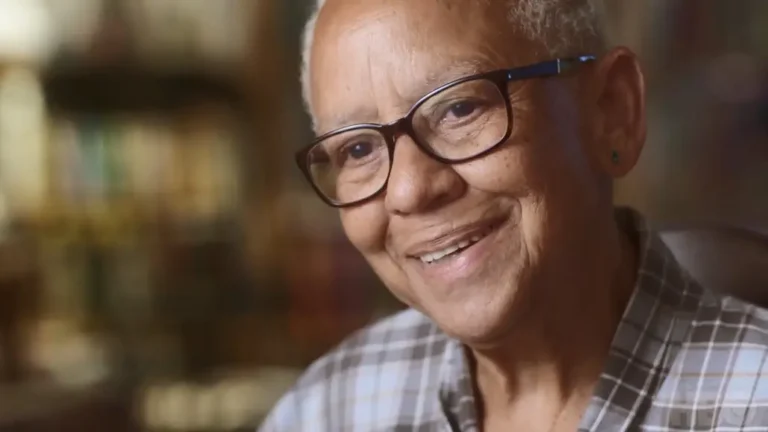Are We Off the Record? A Congresswoman Learns the Rules of Journalism
Requesting anonymity is one thing, but don’t open your mouth until you get it
New York Rep. Carolyn Maloney just learned a lesson about going off the record. Her teacher was The New York Times Editorial Board.
Or maybe she just forgot. While seeking the newspaper’s endorsement for a 16th term, the Manhattan Democrat said President Joe Biden wasn’t running for re-election. She thought she was speaking off the record. The comment added to reports that many members of her party don’t want him to run for a second term.
And that wasn’t even the worst thing that happened to Maloney during the session.
Using anonymity when talking to reporters is a gamble. It can be embarrassing when too-colorful statements turn up in a news report, attributed to an organization’s spokesperson. At worst, it can be financially damaging to a brand if sensitive information is disclosed. Some successful PR people go their entire careers without going “off the record.”
But anonymity can be a highly effective way to shape a story. You can steer a reporter to “on-the-record” sources, such as public reports and official documents, that the reporter might never find or not find as quickly. To explain complex subjects, you can help the reporter with a candid discussion that will only be background in the story and won’t need attribution.
Editorial board interview
Because of redistricting, Maloney, chair of the House Oversight Committee, was running in an upper Manhattan district against another 30-year member of Congress, U.S. Rep. Jerrold Nadler, chair of the House Judiciary Committee.
The episode began when Eleanor Randolph, a Times contributing editorial writer, asked Maloney, who is 76, whether there should be an age limit for members of Congress. Maloney said no. (Nadler is 75.)
According to a transcript, Randolph then asked another question:
Randolph: Should President Biden run again?
Maloney: Off the record, he’s not running again.
Jyoti Thottam, editorials editor: Not off the record. On the record.
Maloney: On the record? No, he should not run again.
Thottam: OK, thank you.
So, was it on the record, or off? Thottam didn’t ask a follow-up question, changing the subject to Ukraine war funding.
Here’s the lesson: Sources don’t get to decide what is “off the record.” Reporters must agree.
(I’m lumping together under “off the record” several forms of anonymous sourcing, such as “not for attribution” and “on background.”)
The format of the editorial board interview didn’t allow for off-the-record statements. “We informed all candidates and their staff that the interviews would be published as conducted,” a spokesman for the Times said by email.
Question of accuracy
There are several reasons for this rule. On-the-record statements have a measure of public accountability, so they are deemed more trustworthy than off-the-record ones.
“Sources often insist that we agree not to name them before they agree to talk with us. We must be reluctant to grant their wish,” The Washington Post says in its Policies and Standards.
“When we use an unnamed source, we are asking our readers to take an extra step to trust the credibility of the information we are providing,” the Post says.
By naming sources, “readers can make better-informed judgments about the reliability of sources named in our work,” The Wall Street Journal says in a 2019 blog post about its editorial guidelines.
Assuming everything is on the record is good for the news business. You can thank that assumption whenever you see stories with quotes from people that make you shake your head. (Why did they say that?) And news organizations don’t want reporters slowed down by haggling over attribution.
Where’s the rule?
The Times’ Manual of Style and Usage (available on Amazon for $18.99) and its Guidelines on Integrity do not expressly require a reporter’s agreement before going off the record.
“In journalism, attribution is mutually agreed, not unilaterally declared,” the newspaper’s spokesman said.
Yet Thottam’s insistence that Maloney was on the record and the newspaper’s decision to publish her comment reflect a rule that is drummed into reporters in J-school.
“These deals must be agreed to beforehand, never after. A source can’t say something then claim it was ‘off the record,’” according to the New York University’s “NYU Journalism Handbook for Students.”
Trying to go off the record during an editorial board meeting is just a bad idea, even if it’s for a quick comment. It’s not the place for confidentiality.
Nevertheless, if Maloney wanted to persist, she should have waited for an answer to, “Off the record.” Oops!
The coverage
The editorial session was on Aug. 1, but Maloney’s comments did not prompt news coverage until Aug. 13, when the Times released a transcript of the interview and endorsed Nadler. Several media outlets did reports, including CBS News and Fox News.
By that time, Maloney’s comments weren’t quite as newsworthy as they might seem. During a candidates’ debate one day after her Times session, she said of Biden, “I don’t believe he’s running for reelection.” That comment was widely reported, prompted criticism by some Democrats, and forced Maloney to make a “Sorry, I’m not sorry” appearance on CNN.
A cynic might suggest that she was trying to curry favor with the most liberal voters in her district by becoming the third House Democrat to question Biden’s chances in 2024. She wouldn’t be the first to exploit the off-the-record rules to get something into the news.
Yet during a later debate, she praised Biden’s re-election plans, even referring to an announcement that the President has not made.
“I am supporting Joe Biden. He has announced that he is running,” she said.
Maloney’s next chance to put in practice the rules of off-the-record interviews may not come in the U.S. House of Representatives. She lost the primary to Nadler, 56% to 24%, with a third candidate garnering 18%.
Tom Corfman is an attorney and senior consultant with Ragan Consulting Group. Previously, he was director of communications for the Treasurer of Cook County, Illinois, and a member of the Editorial Board of Crain’s Chicago Business.
Contact our client team to learn more about how we can help you with your communications. Follow RCG on LinkedIn and subscribe to our weekly newsletter here.







